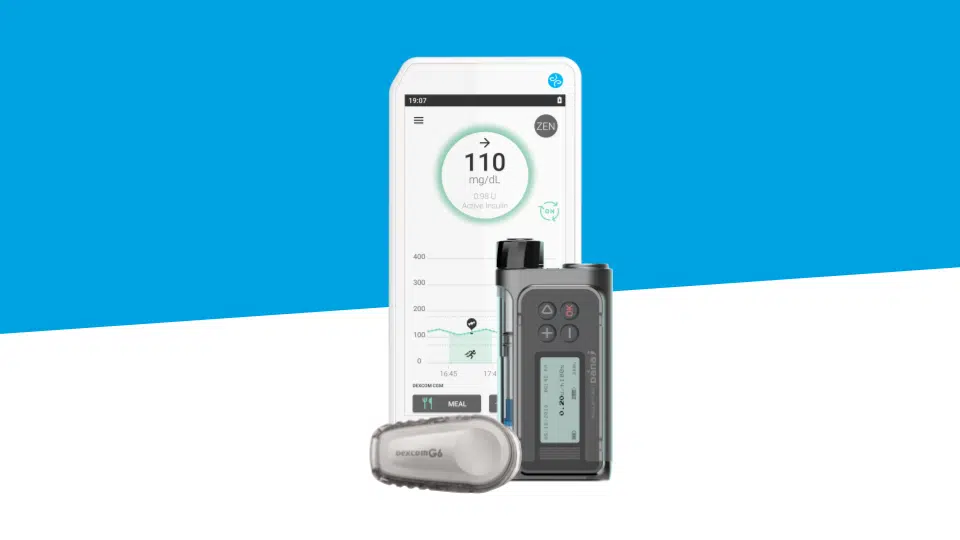
Type 1 Diabetes: Riding the Diet Trends
Low-carb, ketogenic (“keto”), paleo, vegetarian, vegan… These diets are currently all the rage, including among people with Type 1 diabetes. Some of these diets are new, while others have been around for ages. What do they consist of? And what are their benefits?
Low-Carb Diets (Keto, Atkins, etc.) and Type 1 Diabetes
“Low-carb” diets are designed to restrict your carbohydrate intake (starchy foods, sweet foods, fruit, etc.)—sometimes drastically—by incorporating more proteins and fats.
Health professionals advise us to get 40–55% of our calories from carbohydrates, 35–40% from fats, and 10–20% from proteins.1 With low-carb diets, however, this breakdown is as follows: 70–80% fat, 20–25% protein, and 5–10% carbohydrates (or 20 to 50 grams of carbohydrates per day). Low-carb diets limit your carbohydrate intake to force your body to use fat as a source of energy.
There are many types of low-carb diets, with the two best-known being:
- the Atkins diet, which consists of drastically limiting carbohydrates and then reintroducing them slowly;
- the ketogenic (“keto”) diet: with this diet, the body absorbs so few carbohydrates that it enters a state of “ketosis” (production of ketones by the liver to provide energy, replacing carbohydrates as the standard source of energy).
Most people use low-carb diets as a quick and easy way to lose weight. If you have type 1 diabetes, a low-carb diet can help control your blood sugar level by limiting the blood sugar spikes that are associated with the consumption of carbohydrates. As a result, you need less insulin and can reduce your mealtime boluses.
However, much remains to be learned about these diets. If you’re thinking about a low-carb diet, be sure to consult your doctor or nutritionist first.
| Important:
The “ketosis” achieved by low-carb diets is not to be confused with “ketoacidosis,” which is an extremely dangerous condition. |
Gluten-Free Diets
As its name implies, a gluten-free diet involves the elimination of all foods containing gluten (wheat, barley, rye, oats, etc.).
The paleolithic or “paleo” diet calls for a return to the hunting and gathering ways of our ancient ancestors by placing the focus on fruits, vegetables, lean meats, eggs, and fish.
Note: A gluten-free diet is used to treat celiac disease, the autoimmune disease most often linked to type 1 diabetes.
Type 1 Diabetes and Vegetarian Diets
Vegetarian diets are marked by the absence of animal proteins. In other words: no meat, fish, or seafood.
Vegetarian diets can be suitable—and even beneficial—for people with type 1 diabetes. These benefits include the following:
- Rich in dietary fiber, vegetarian diets help to regulate blood sugar levels, contribute to a feeling of “fullness,” and reduce the risk of cardiovascular disease.
- Vegetarian diets are extremely low in saturated fats, thereby limiting many of the complications associated with type 1 diabetes, such as high cholesterol, high blood pressure, and the risk of cardiovascular disease.
- Vegetarian diets can help you reach a healthy weight and improve your insulin sensitivity.
Vegetarian diets are composed of protein-rich meat alternatives such as legumes (lentils, chickpeas, dry beans, etc.), soy products (tofu, seitan, tempeh, etc.), and nuts/seeds (walnuts, hazelnuts, almonds, etc.).
Warning: Plant-based alternatives to animal proteins may be high in carbohydrates and even cause hyperglycemia.
There are several types of vegetarian diets. Some are more “extreme” than others, such as the vegan diet, which is based solely on foods of plant origin and prohibits dairy products and other products of animal origin (eggs, honey, etc.). Others are “hybrid” alternatives such as the “flexitarian” diet, a “lighter” version of the vegetarian diet consisting of less meat (especially red meat) and more fish.
If you have type 1 diabetes, a vegetarian diet can affect the day-to-day treatment of your disease, in particular when it comes to insulin requirements. You may need to modify your treatment in accordance with your level of blood sugar.
Whichever diet you choose, it is important that you avoid nutritional deficiencies and imbalances. A nutritionist can help you learn more about foods and their composition.
Sources:
1. National Health and Nutrition Program







